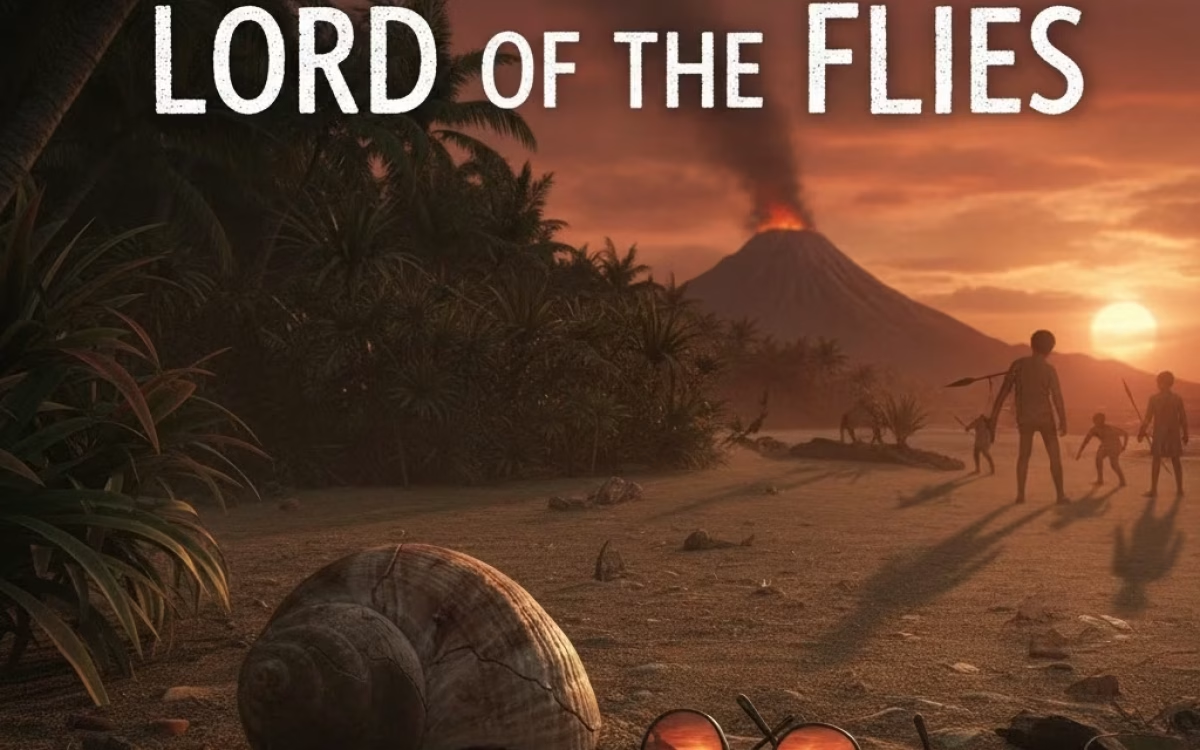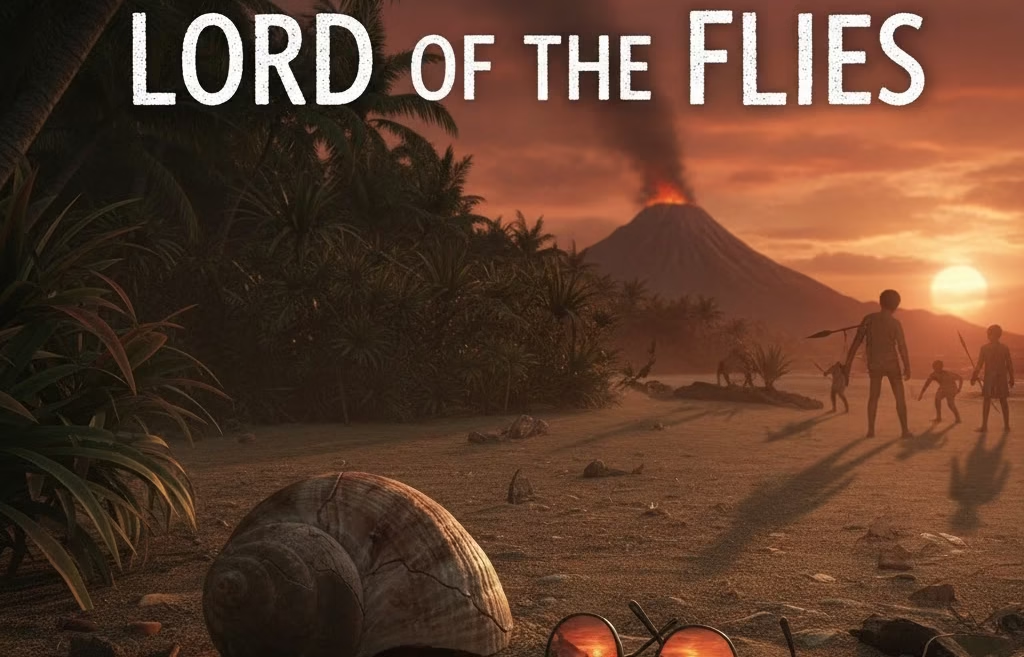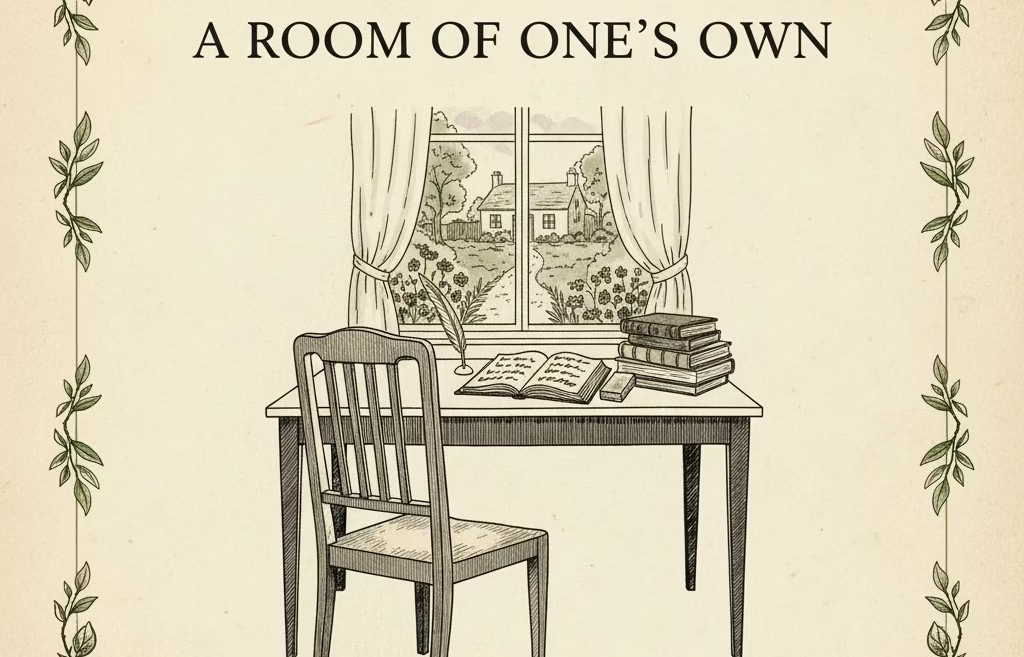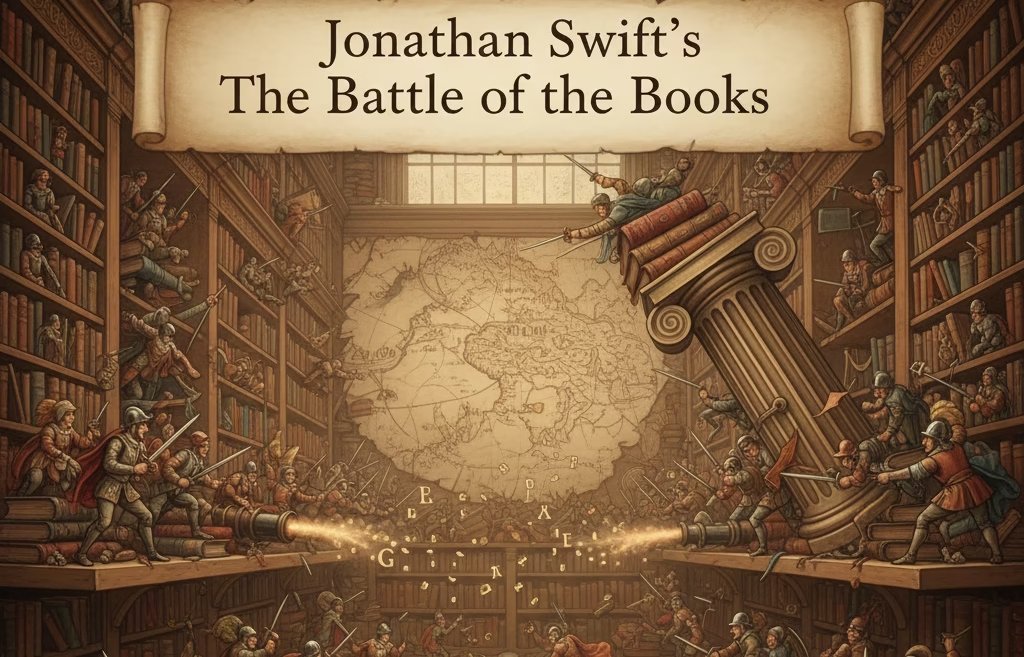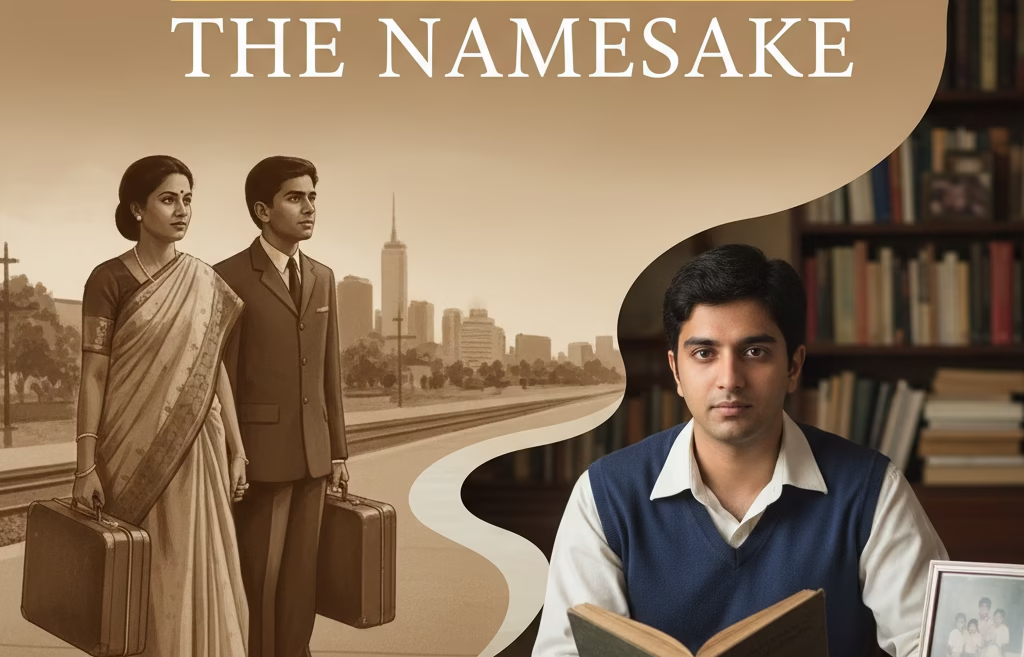Introduction
William Golding’s Lord of the Flies is far more than a simple tale about boys stranded on a remote island. It is a relentless examination of human nature, morality, and the delicate boundaries that hold civilization together. This classic novel, first published in 1954, challenges deeply held beliefs about innate goodness. It exposes the fragile line that separates order from chaos. Readers from the bustling streets of London to the vibrant, multicultural societies of India find that Golding’s story rings with a universal urgency: When stripped of societal rules, how quickly do humans descend into their baser instincts?
Golding’s World War II past shapes this novel deeply. He saw firsthand the horrors of war and destruction. Lord of the Flies is more than a story about kids lost on an island. It is a powerful allegory. It warns of savagery lurking in every human heart. This message is urgent today, amid global uncertainty.
The story takes place on a tropical island. British schoolboys are stranded there without adults. The island acts as a small-scale society. It exposes battle lines: order versus savagery, reason versus fear, democracy versus tyranny. Ralph and Jack represent opposite sides in a power struggle. Golding shows how power can corrupt and divide.
Golding fills the story with rich symbols. The conch shell stands for law and order. It contrasts with the “Lord of the Flies,” a pig’s severed head symbolizing evil. This symbolism deepens his critique of fragile civilization. The novel’s psychological depth and brutal innocence lost invite readers to face harsh truths about human nature and society’s dark side.
William Golding’s Lord of the Flies: Plot Overview
At its surface, Lord of the Flies recounts the story of a group of British schoolboys stranded on a deserted island after a plane crash during a war. The initial elation of freedom soon disintegrates as the boys attempt to create a society of their own, but order is fragile in the absence of established authority.
The boys, ranging in age from young children to early adolescents, initially band together under the charismatic and rational leadership of Ralph, supported by Piggy, the intellectual and socially awkward boy with glasses symbolising insight and civilisation. Ralph represents order, democracy, and hope for rescue, as he prioritises maintaining a signal fire and organising shelters.
However, the arrival of Jack Merridew, head of the choirboys and an imposing figure, introduces conflict. Jack’s ethos gravitates towards hunting, savagery, and asserting power through intimidation. He ultimately challenges Ralph’s authority, dividing the group and plunging the boys into tribalism and chaos. As violence escalates, symbolic objects like the conch shell, fire, and the mysterious “Lord of the Flies”—a pig’s severed head mounted on a stick—become potent markers of the boys’ disintegrating society.
Tragically, innocence is lost in the form of Simon, the introspective and mystical boy who comprehends the true nature of the “beast” lurking within them all. His brutal death during a frenzied ritual epitomises the climax of human darkness and fear. The novel ends with the rescue of the remaining boys by a naval officer, a moment heavy with irony, given the destruction and moral decay they have endured before the arrival of adult authority. FULL TEXT
William Golding’s Lord of the Flies: Title Significance
Lord of the Flies is a title rich with symbolic and thematic weight. The phrase, translated from the Hebrew “Beelzebub,” refers traditionally to a demon or “Lord of the Flies,” representing decay, corruption, and evil. Golding’s choice of title emphasises the novel’s exploration of inherent human darkness and moral ambiguity.
The pig’s head on a stick, dubbed the “Lord of the Flies”, becomes an altar of malevolence on the island. It signifies the externalisation of the boys’ inner savagery—the evil that lies dormant within every human being, waiting for the collapse of societal constraints to emerge freely. This representation challenges the post-war belief in rational progress and the innate goodness of humanity, suggesting instead that chaos and violence are fundamental parts of human nature.
Moreover, the title evokes the physical decay of the island itself as the boys’ civilisation deteriorates. Flies, creatures of rot and death, swarm around the pig’s head, reinforcing the sense of moral and physical decomposition that permeates the narrative.
William Golding’s Lord of the Flies: Themes
Civilization vs. Savagery
At the heart of Lord of the Flies is a deep conflict. It pits civilization against raw savagery. Ralph and Piggy stand for structure, reason, and the common good. They try to rebuild the adult world they lost. Jack, meanwhile, embodies power, fear, and lawlessness. This contrast drives the story’s tension.
The novel shows that civilization’s surface is thin. When authority disappears, instincts rise. Rules break down, and chaos follows. This theme speaks across cultures but hits close to home in places like India and the UK. These countries have complex stories of colonial rule and social change. They continue wrestling with the clash of imposed order and native identity. Golding’s work shines a light on this fragile boundary. Beneath the mask of social order lies a dark potential for destruction. The line between civility and instinct is thin—and easy to cross in crisis.
The Nature of Evil
Golding’s novel intricately examines the concept of evil as an internal force rather than an external entity. Simon’s mystical insight reveals that the “beast” the boys fear is not a creature lurking on the island but the darkness within themselves.
This internal evil challenges readers to reflect on the ethical horizons of humanity. It rejects simplistic good-versus-evil binaries and instead offers a nuanced understanding of moral complexity. It is this exploration that gives the novel its psychological depth and enduring appeal in academic discussions worldwide.
Loss of Innocence
The boys’ journey from innocence to experience, from playful adventure to violent struggle, is a painful rite of passage. The novel mourns lost innocence but also questions whether such loss is inevitable, necessary, or redeemable.
Ralph’s poignant tears at the end symbolise more than grief—they represent the irreversible transformation of the self when confronted with the harsh realities of human nature and societal breakdown.
Power and Leadership
Golding offers a study of differing leadership styles and human responses to power. Ralph’s leadership is democratic and idealistic; he seeks consensus and order. Jack’s is authoritarian, relying on fear and force. The destructive consequences of unchecked power and groupthink serve as a cautionary tale about political systems and governance, making the novel relevant to contemporary conversations about authority, populism, and social division.
William Golding’s Lord of the Flies: Critical Analysis
Golding’s literary craftsmanship combines simple yet evocative prose with symbolic depth and a tightly woven narrative structure. His use of an omniscient third-person narrator allows readers to delve into the psychological states of multiple characters, enhancing the multidimensional portrayal of human nature.
The novel’s principal symbols—the conch shell, the fire, and the pig’s head—function as multifaceted signifiers. The conch represents law and order, democracy, and the fragile voice of reason. Its destruction signifies the death of civil society. The fire symbolises hope and rescue but also destructive power when allowed to spiral out of control. “Lord of the Flies” distills the novel’s thematic heart: the pervasive presence of evil within.
The island’s setting is deliberately non-specific, an everyplace wilderness symbolizing the untamed human psyche. The “scar” left by the plane crash is a metaphor for humanity’s imprint on nature and innocence. This ambiguous geography invites readers from all cultural contexts to see reflections of their own world’s contradictions and conflicts within the narrative.
Golding’s skillful alternation between varied sentence lengths—short, punchy lines punctuate moments of high tension, while longer, lyrical descriptions evoke atmosphere and mood—creates a rhythm that memorably captures the psychological intensity of the story.
William Golding’s Lord of the Flies: Personal Reflection
Encountering Lord of the Flies for the first time can be deeply unsettling. Speaking as a literary scholar who has taught in classrooms across the UK and India, I find Golding’s novel more relevant today than ever before. It speaks to a globalised audience navigating the fragile bonds that hold society together.
The character of Piggy, in particular, strikes a profound chord. His intelligence and vulnerability, coupled with his social ostracism, shape him into a tragic figure. Often overlooked and misunderstood, Piggy reminds us how societies frequently marginalize the very voices that uphold reason and empathy.
Jack’s descent into savagery, marked by his ritualistic use of face paint, echoes cultural rites found worldwide. Yet Golding does not portray this transformation as a celebration. Instead, it reveals a dangerous loss of self-control and ethical grounding.
Reading the novel today invites us to reflect on contemporary events. Moreover, political polarization, youth unrest, and communication breakdown often mirror the chaos Golding dramatized decades ago on that remote island.
Lord of the Flies transcends its historical context. It offers timeless insights into the human condition. Its warnings about fear, exclusion, and the seductive nature of power remind us to nurture empathy and understanding to preserve social cohesion. EXPLORE MORE WORKS
Conclusion
The enduring power of Lord of the Flies lies in its unflinching examination of humanity’s darkest potential. This is set against fragile hopes for order and civility. Golding does not provide neat answers or easy conclusions. Instead, he holds up a mirror to readers, reflecting the struggles we all face—both as individuals and societies—around morality, identity, and survival.
Its importance is underscored by ongoing academic attention and its strong presence in educational curricula worldwide, from British exam boards to universities across India. The novel continually challenges readers to ask difficult questions: What truly sustains civilization? How do we confront the “beast” within ourselves?
For lovers of literature and students alike, Lord of the Flies remains an essential work. It is a grim but vital reminder that beneath the thin surface of social rituals and polite civility lies much that is hidden—forces that could either build us up or tear us apart.

